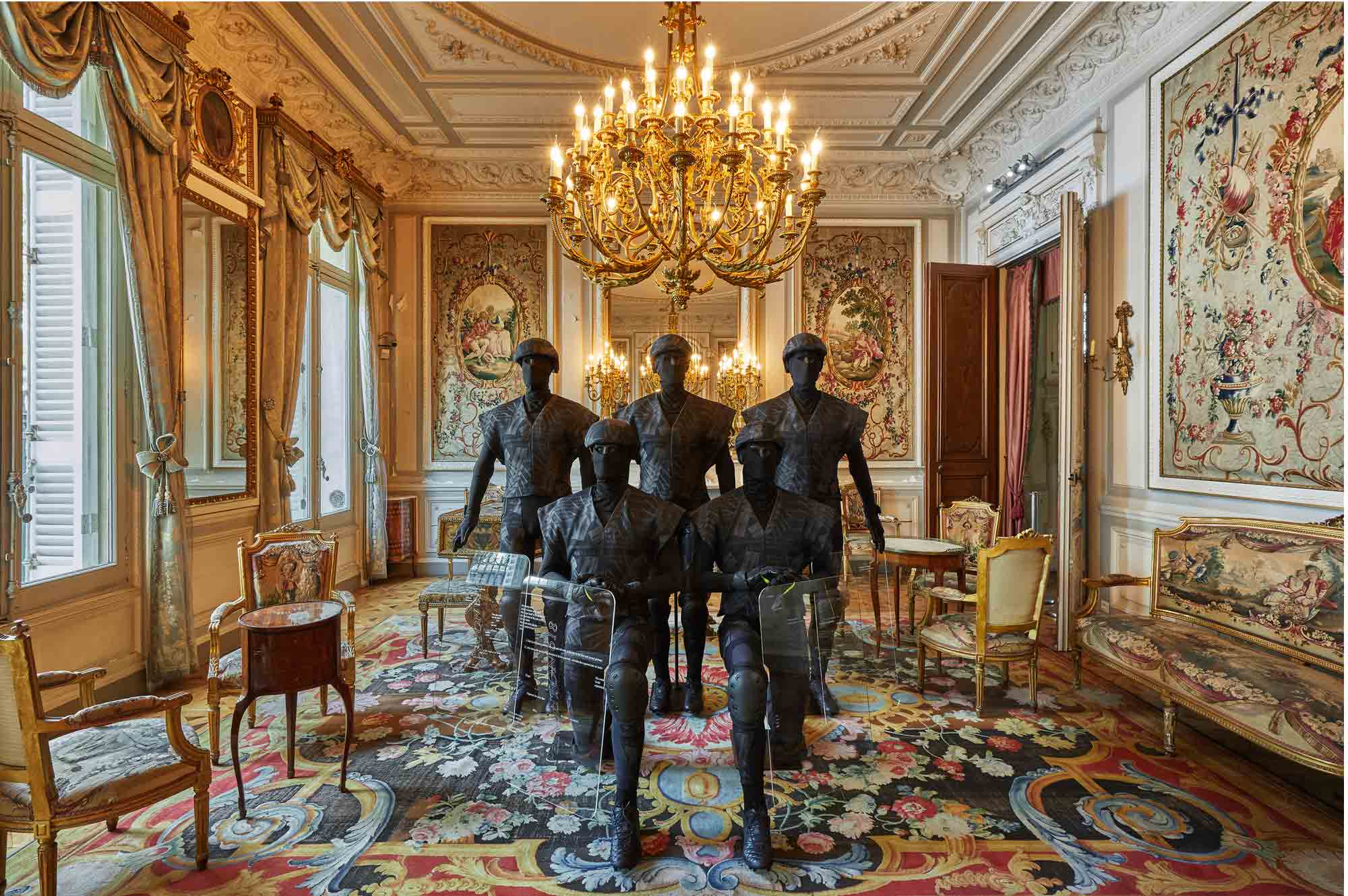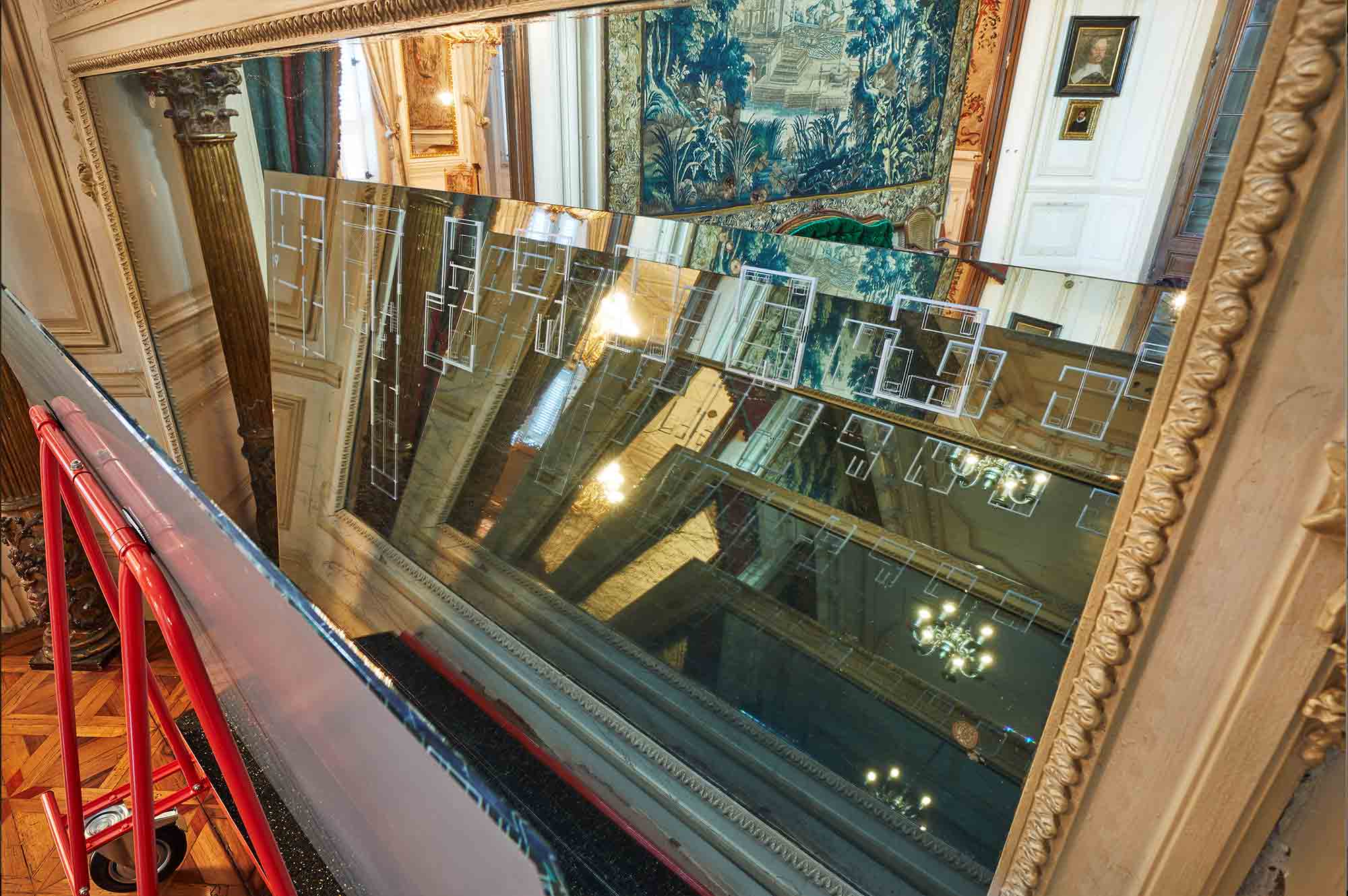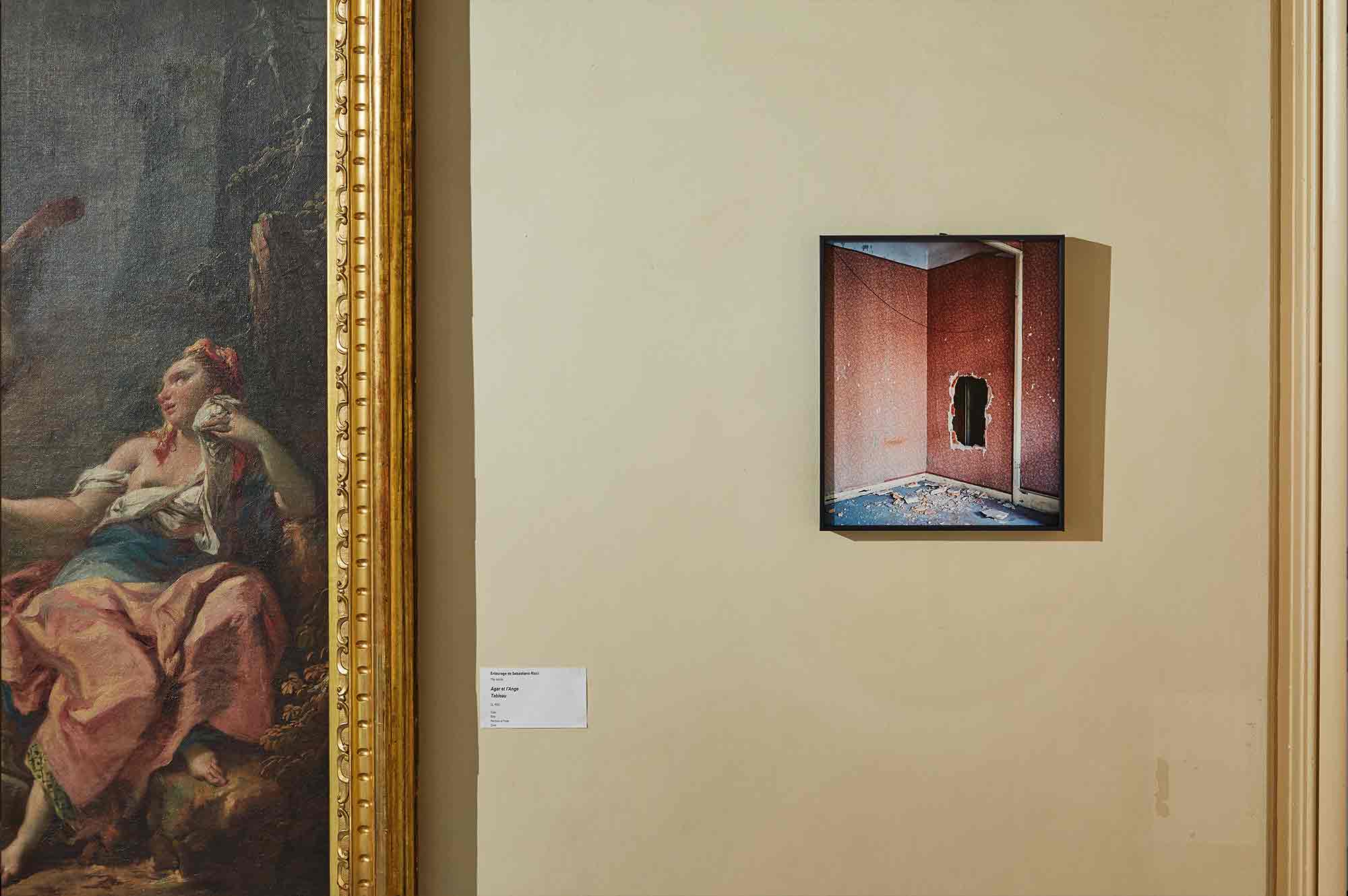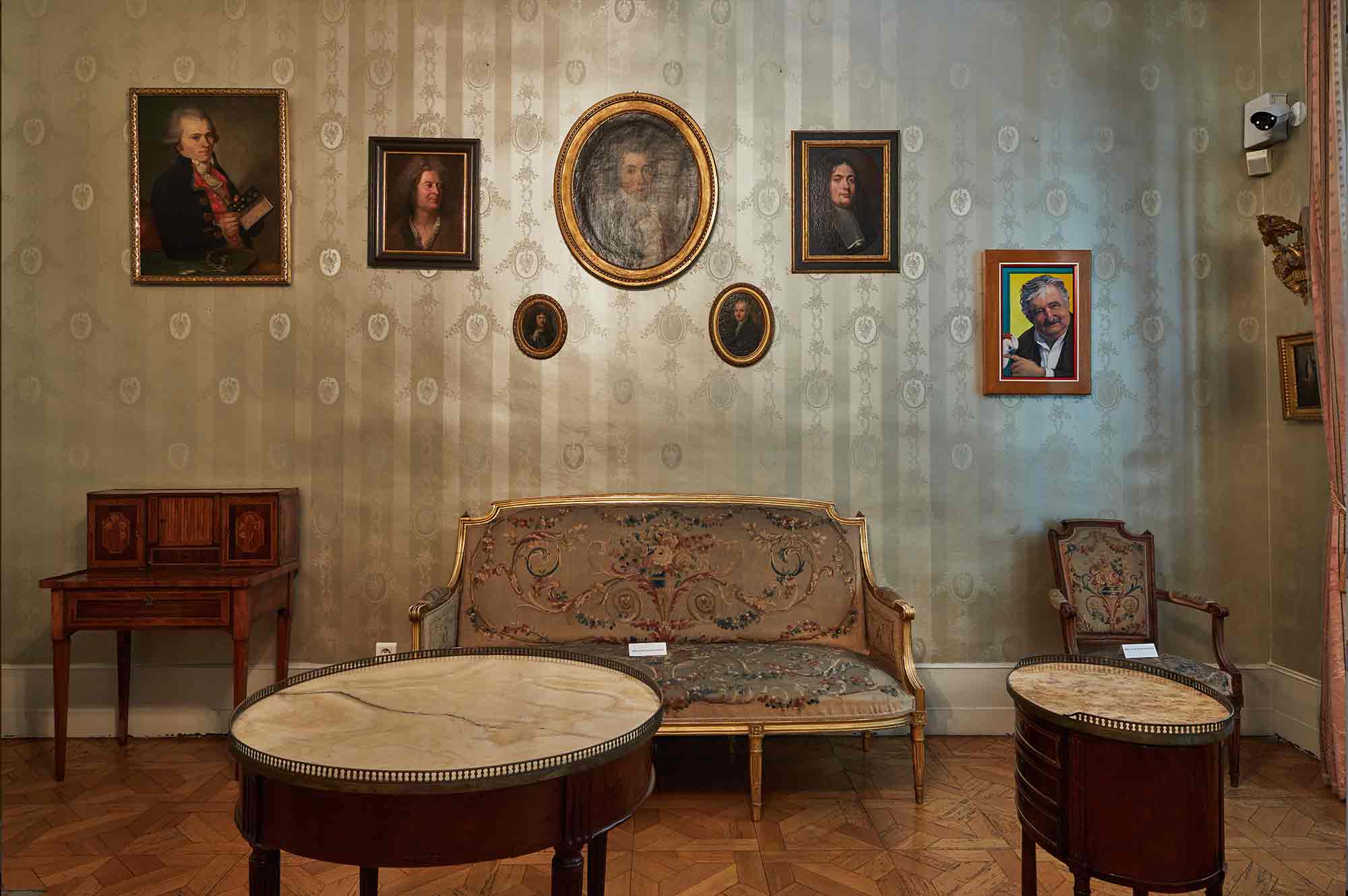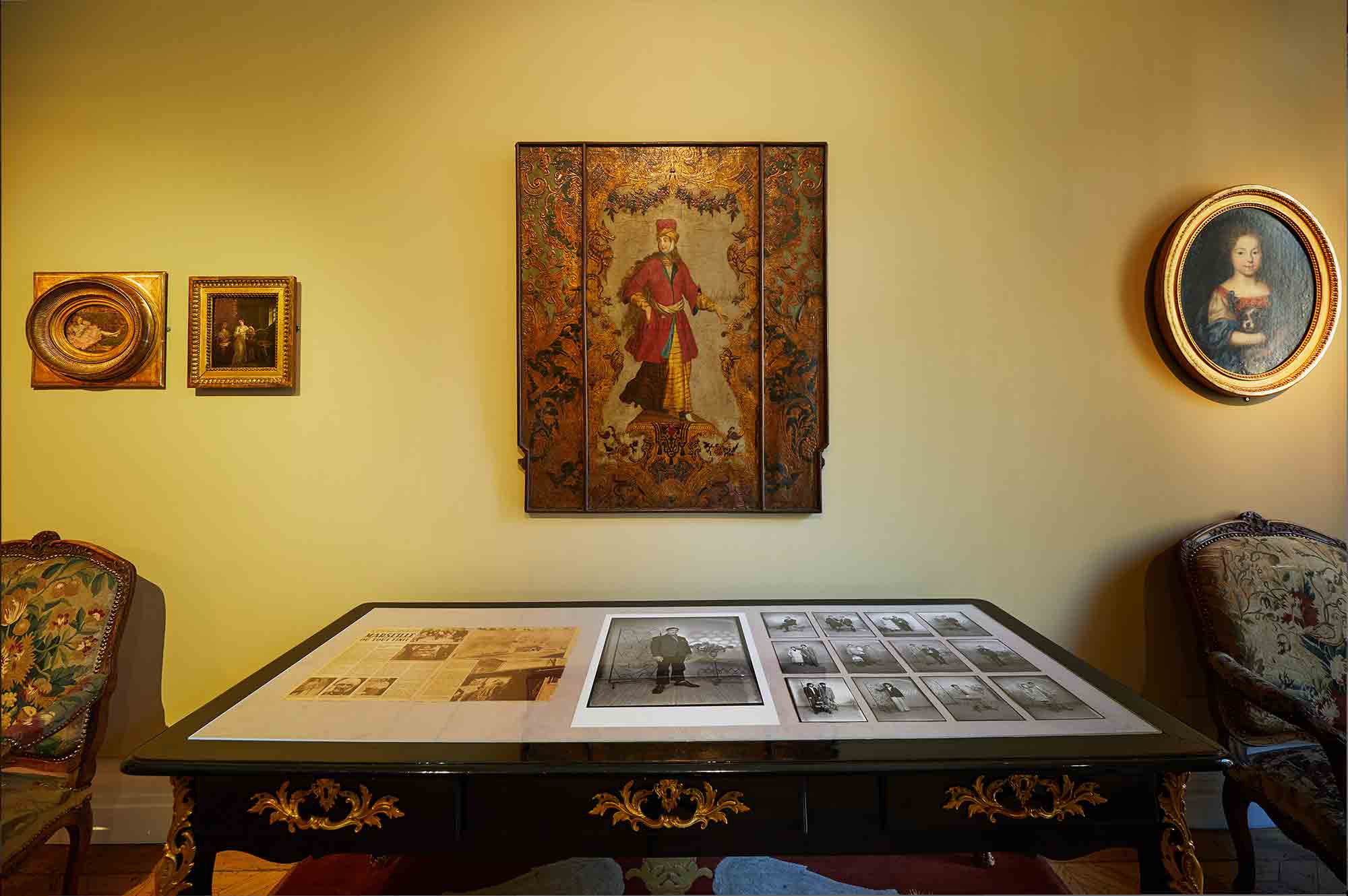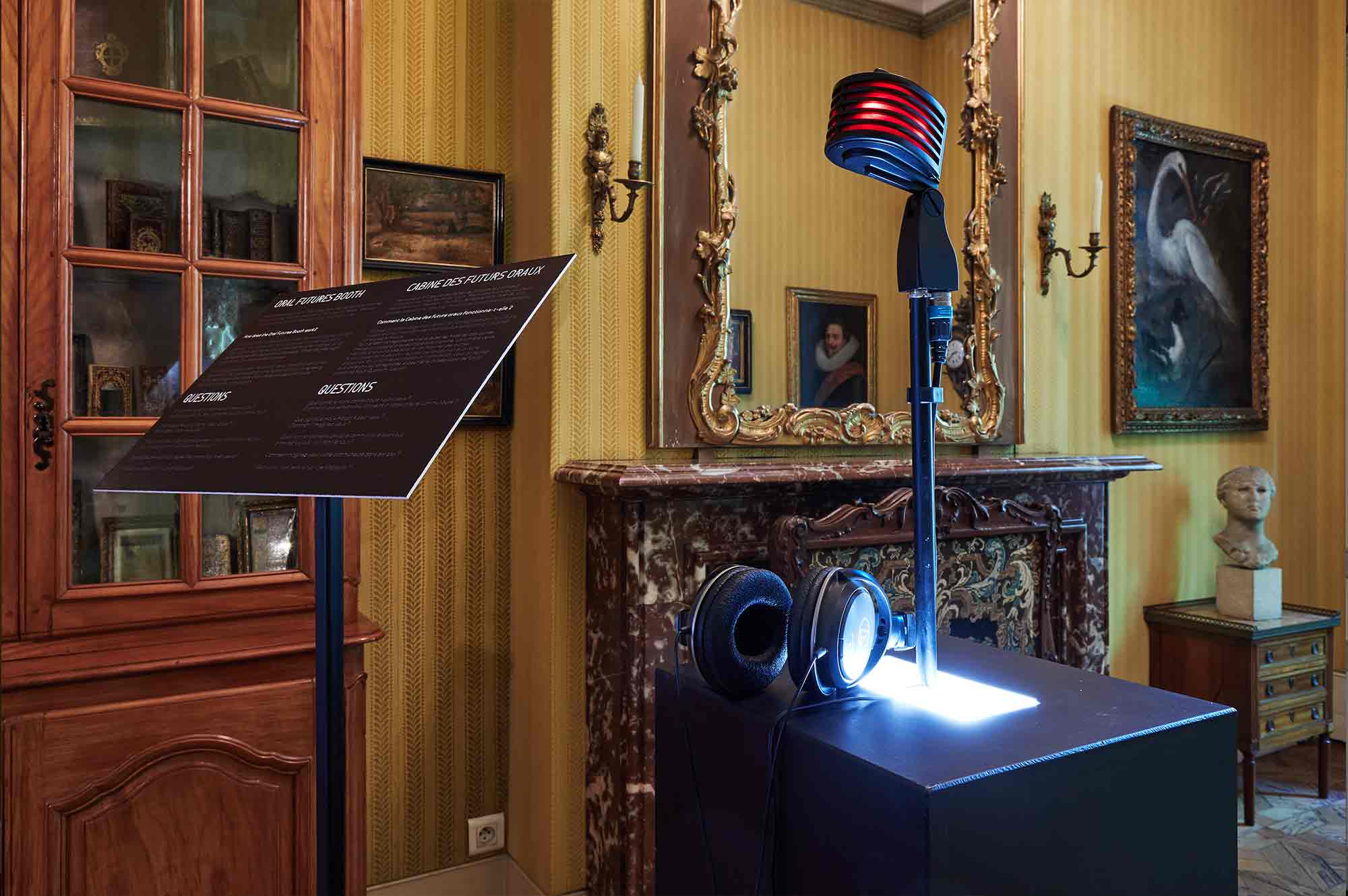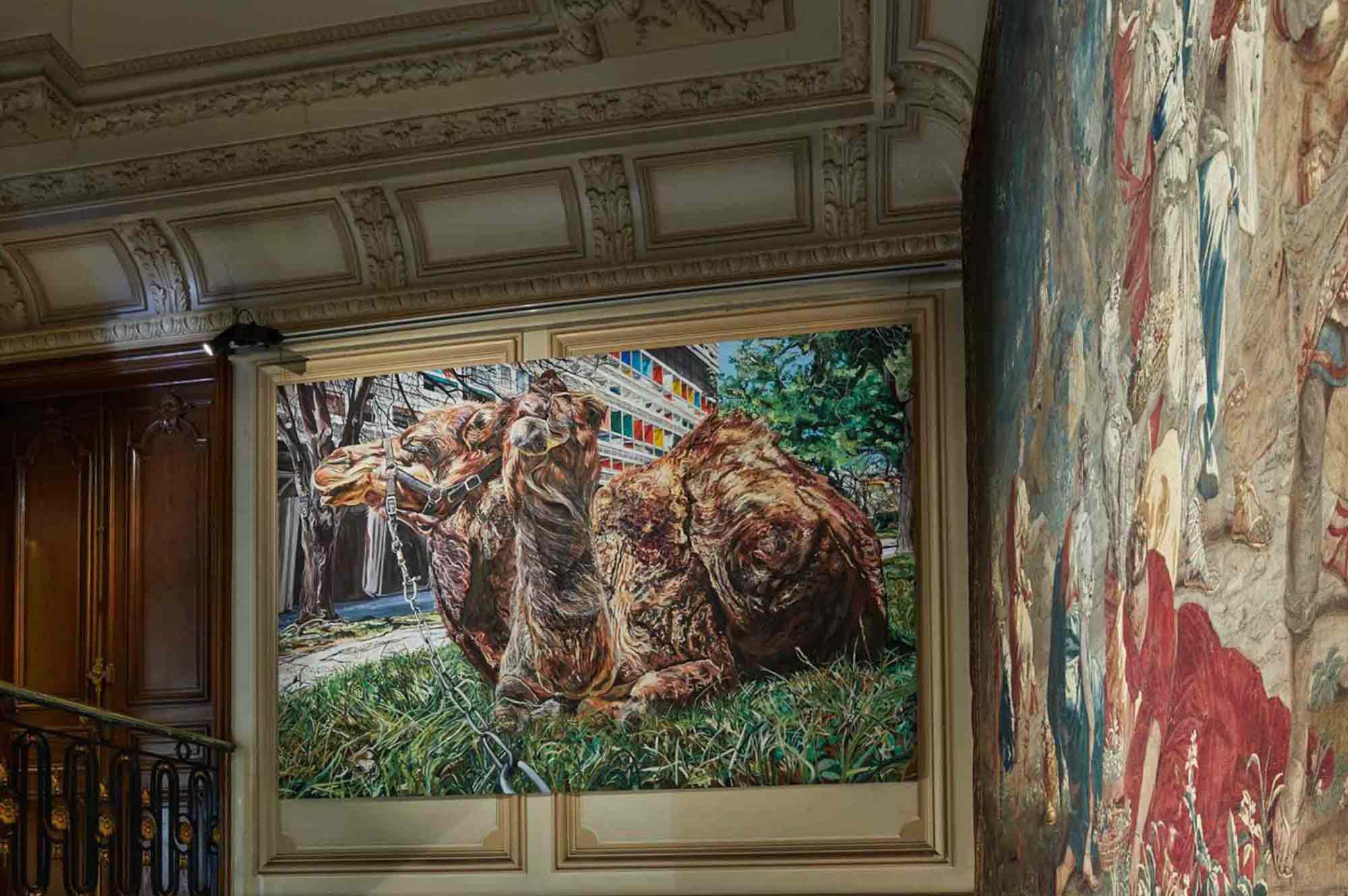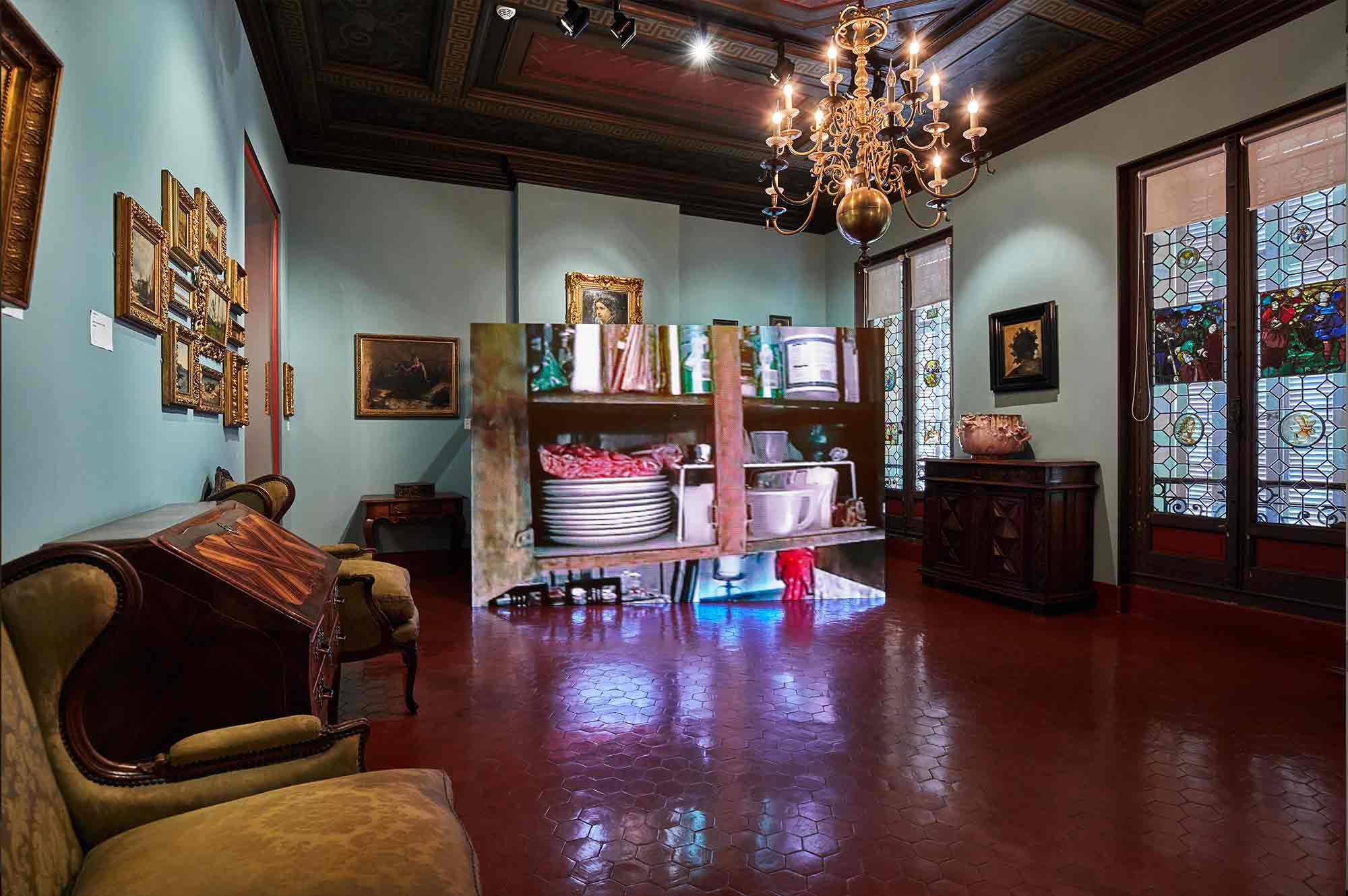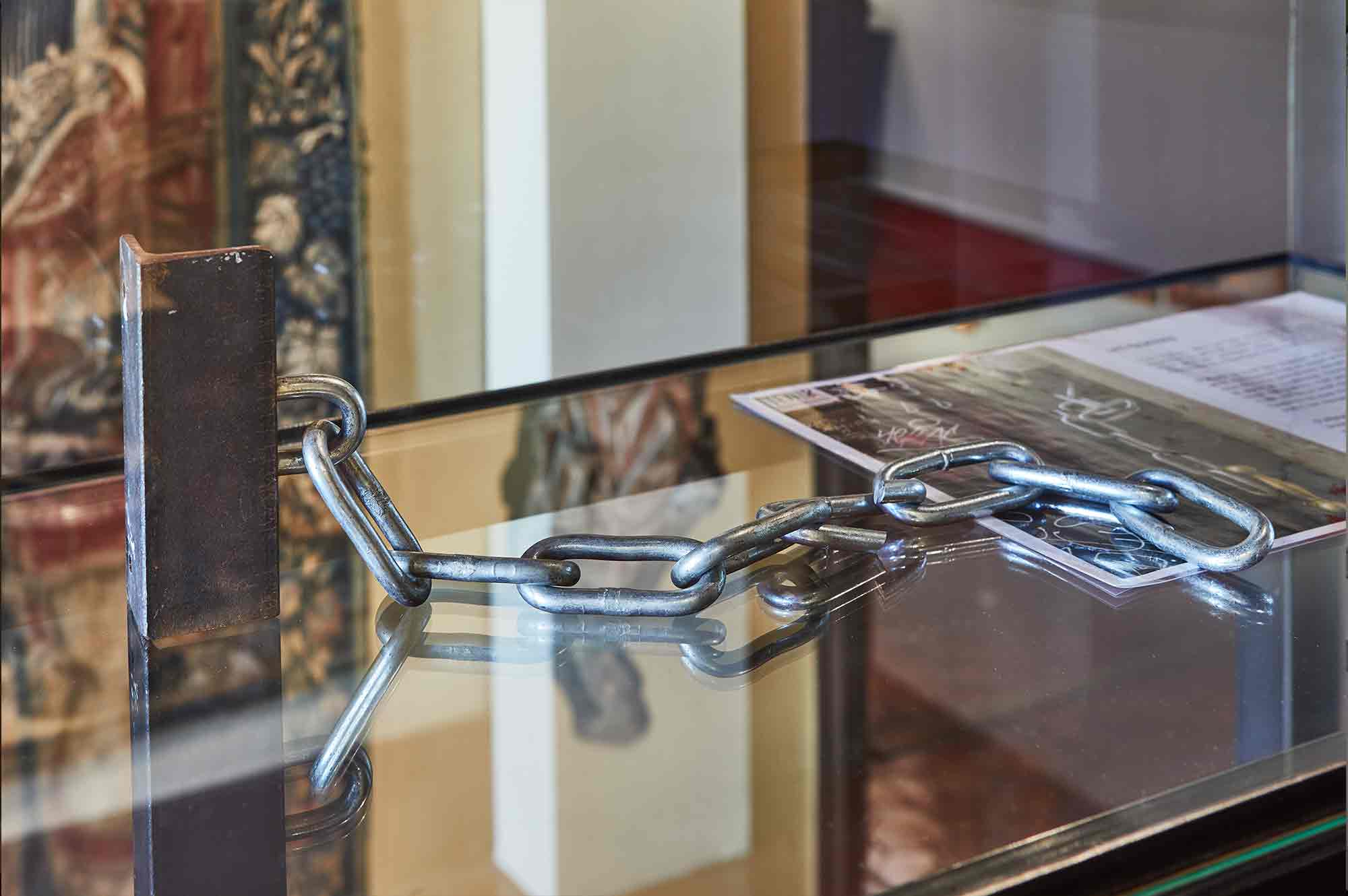For the virtual visit, please note that the Traits d’union.s exhibition takes place throughout the entire museum.
Designed by Gabriel Clauzel, the Musée Grobet-Labadié was built in 1873 for the wealthy businessman and republican politician Alexandre Labadié. In 1919, Marie Grobet (née Labadié) donated the mansion along with her family’s extensive art collection to the city of Marseille under the agreement that they would be converted into a public museum. Eventually opened in 1926, its interiors immerse visitors in a historical vision of bourgeois life at the turn of the century. But at a time when so many people in Marseille, and indeed all around the world, are finding it increasingly difficult to find a home, or even just a place to live, one might rightfully ask: just whose history, just whose life is this museum supposed to represent?
Installed throughout the museum’s opulent rooms, The Home: Rentals, Experiences, Places discretely integrates the participants’ works into its existing collection and decor, perforating the otherwise seamless surfaces of these stately rooms. The Home thus opens parallel portals to other times and places, inviting visitors to consider contrasting visions of how people lived then and now. Martine Derain’s photographs, for example, show the interiors of abandoned buildings along Marseille’s Rue de la République, which were built in the same century as the Musée Grobet-Labadié, yet most of its inhabitants were evicted over the past decades. Somewhat comparably, the chains, exhibited by Noailles Debout, testifies to the collective trauma of those who survived the collapse of substandard housing in the nearby neighbourhood of Noailles.
Elsewhere, Samia Henni’s installation draws on her interviews with various ‘essential workers’, many of whom worked with people living on the streets of Marseille. By contrast, Cameron Rowland’s works illustrate the surveillance practices used in the US probation system, showing how one’s own home can become a site of imprisonment. As a counterpoint, Lukas Duwenhögger’s portrait of José Mujica and Ken Okiishi’s A Model Childhood attest to the conflicted comforts of power and privilege, albeit in vastly different contexts. Meanwhile, the forward-looking contributions by Arseny Zhilyaev and Black Quantum Futurism complement recent history by envisioning different futures – be they dystopian or utopian.
Altogether, The Home not only points to the disparities between how different people experience their home or lack thereof; it also offers a starting point for thinking about which alliances, which possible futures can be forged between all of them.
Participants: Black Quantum Futurism* (Collective, US), Martine Derain* (1960, FR), Lukas Duwenhögger (1956, DE), Jana Euler (1982, DE), Ken Okiishi* (1968, US), Cameron Rowland (1988, US), Reena Spaulings (Collective, US), Arseny Zhilyaev*(1984, RU), Samia Henni* (1980, DZ), Noailles Debout (Collective, FR).
* Work conceived for the occasion of Manifesta 13 Marseille
The threads of this plot are woven throughout the city at Bel Horizon residential condominium and the Hôtel-Dieu Intercontinental.


Book your virtual tour here









